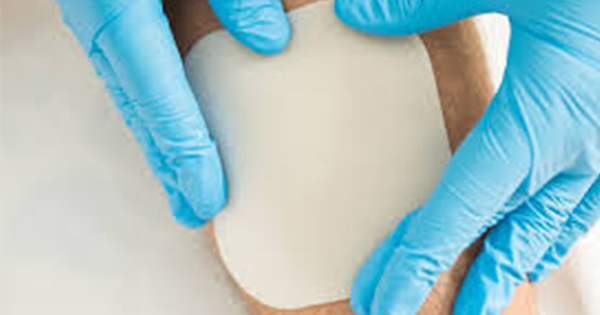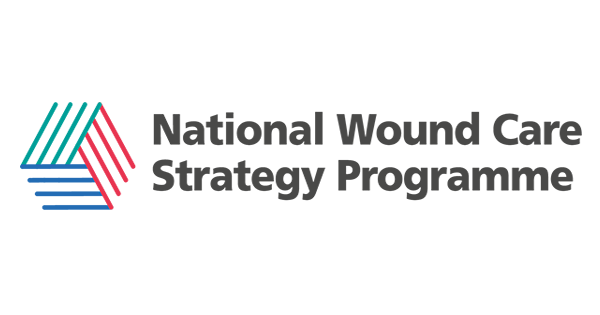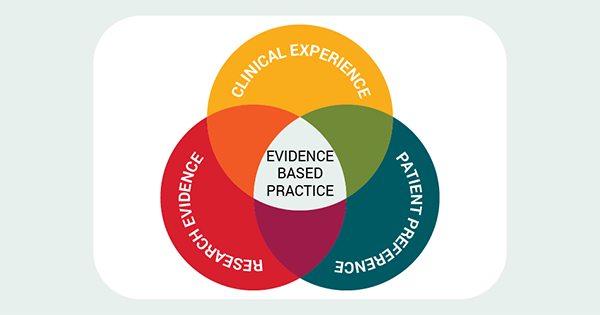The NHS treats more than 2.2 million chronic wounds per year, and the cost of managing these wounds and associated comorbidities is £5.3 billion annually (Guest et al, 2015; 2020). Costs increase when there are unwarranted variations in care, and this has been a key topic for the NHS since the publication of the Carter report (2016).
In wound care, there is good evidence to deliver the right care at the right time and place, yet many patients are not receiving evidence-based wound care, leading to unwarranted variations.
When high-quality evidence is used to underpin clinical practice, a consistent approach is achieved that results in improved patient outcomes. Unwarranted variation can result in increased costs and prolonged patient suffering, leading to wound complications such as infections (Dowsett, 2023) that result in greater resource demand (International Wound Infection Institute [IWII], 2022). The evidence states that wound bed preparation reduces the risk of wound infection by cleansing and debriding the wound to remove devitalised tissue and biofilm formation (IWII, 2022).
By identifying areas where variation can be reduced, quality improvements can be implemented to enhance patient outcomes, leading to visible and effective results. Implementing clinical pathways can help align clinical practice with evidence-based guidelines, leading to high-quality care (Kiyama et al, 2003). Research shows that clinical pathways are effective tools for reducing variations in practice, which in turn maximises patient outcomes and improves clinical efficiency (Adamina et al, 2011; Hegarty et al, 2015; Fletcher et al, 2018). For sustainable improvements in efficiency and patient outcomes, these initiatives must become embedded as the standard approach.
Leading healthcare organisations worldwide understand that improving care is not enough; a systematic approach to sustaining these improvements is equally crucial (Mate and Rakover, 2016). Sustainability means maintaining the benefits of an improvement project, even in the face of staff and organisational changes (Silver et al, 2016). Unfortunately, up to 70% of organisational changes are not sustained (Beer and Nohria, 2000). It was found that 33% of quality improvement projects are not sustained when evaluated 1 year after completion (Maher et al, 2010). Since sustainability does not happen by chance, it is important to plan for it from the start by using strategies such as quality improvement processes and methodologies to address potential challenges (Silver et al, 2016).
Method
In 2016, the Skin Integrity Team (SIT) at Doncaster and Bassetlaw Teaching Hospitals NHS Foundation Trust (DBTH) noticed a high level of wound infection rates, along with inconsistencies and variability in wound care practices at the outpatient wound care clinic. Between 2016 and 2023, a quality improvement process was used to identify the need for change and achieve sustainable embedded improvement [Figure 1].
In the ‘starting out phase’ [Figure 1], the SIT identified the high infection levels in the complex wound clinic (CWC) at DBTH as an area for improvement. The clinic treated various wound types, including leg ulcers, diabetic foot ulcers, surgical wounds, skin grafts and donor sites, and traumatic injuries. During the ‘diagnosing’ phase, the SIT discovered that there was no consistent approach to wound bed preparation (WBP). It was observed that some patients received no WBP, others had their wounds cleaned with water or normal saline, and some underwent mechanical debridement using gauze. The primary method was normal saline. Recognising this inconsistency as a problem, the team aimed to reduce variation in care, in an effort to reduce wound infection rates.
To identify the changes needed to improve outcomes, the SIT reviewed existing evidence on the role of active wound cleansers as an essential part of the WBP process. In 2016, baseline infection data from the CWC was collected over a 4-week period to quantify the impact of any future changes. During this period, wound infections were confirmed by swabbing any wounds that showed signs or symptoms of local, spreading or systemic infection, according to the wound infection continuum (WIC) shown in Figure 2 (IWII, 2016). This approach was used to minimise subjectivity in the data collection. Outside of this period, the team followed the recommendation in the WIC to avoid swabbing for local infections. The baseline wound infection rate (positive swab result) was identified as 7.3% (28/261 patients).
To start putting improvements into action, the SIT reviewed the current literature and evidence available around antimicrobial wound cleansing solution. The IWII (2016) has suggested two solutions that would target biofilms — polyhexameithylene biguanide (PHMB) and octenidine dihydrochoride (OCT). These products were compared based on the effect on colony units, toxicity, detergent, skincare and deodorising agents, and the available evidence. Following this, PHMB and betaine surfactant solutions were selected due to having higher quality research that showed a better effectivity time than OCT. PHMB was also found to have a lower toxicity, reduced surface tension and no additional ingredients being required to protect the skin or deodorise. The SIT reviewed and critically appraised the 11 pieces of evidence that were available around the PHMB solution to judge its trustworthiness, as well as its value and relevance by weighing up how useful the research was in the context of wound bed preparation to reduce wound infection (no specific framework was used).
Some of the evidence supporting PHMB included that of Bellingeri et al (2016), who undertook a randomised controlled trial (RCT) comparing patients with venous leg ulcers (VLUs) cleansed with PHMB and betaine solution (n=143) with patients receiving saline (n=146). It resulted in superior action being seen with the PHMB and betaine solution with improved wound conditions and reduced signs of inflammation over a 28-day period. Andriessen and Eberlein (2008) also found positive results with the use of PHMB and betaine solution as a replacement for saline in a retrospective cohort analysis of VLU patients. A group of patients (n=59) received soaks with PHMB and betaine solution and another patient group (n=53) received saline. The healing was 4 weeks faster for the patients using PHMB and betaine solution, on average, and the infection rate was 3% over a 6-month observation period. In contrast, the saline group had a 17% infection rate.
After reviewing the literature, the team conducted a local evaluation to validate the findings and assess how easily the new technique could be integrated into local practice. The evaluation took place in 2016 and 2017, focusing on patients at the CWC who had wounds that had not reduced in size over the previous 21 days and/or had undergone repeated rounds of antimicrobial treatments. This criteria was chosen based on information from Bellingeri et al (2016) and IWII (2016), which identified these factors to increase the risk of wound infection. Out of the patients who met the criteria, four agreed to participate in the evaluation [Table 1].
The variable practice of wound cleansing within the CWC was replaced with a PHMB and betaine solution soak (Prontosan Wound Irrigation Solution; B Braun) as standard. This was undertaken consistently at every dressing change for the identified wounds for a 13-week period at the CWC. No other procedural changes were implemented during this phase.
Data on wound size reduction were collected for the four patients, as well as any instances of wound infection while the PHMB solution was being used. The results showed a significant decrease in wound size, with an average reduction of 57%. None of the four patients exhibited signs of wound infection, so no wound swabs were needed during their 13-week stay. Based on these findings, the SIT concluded that the use of the PHMB and betaine solution soak was supported by both strong evidence from the literature and positive local results from user experience. As a result, it was decided to include this product in the wound care formulary and pathways to optimise WBP and reduce infection rates as part of the quality improvement process (Vernon et al, 2021).
In 2017, the pathway and accompanying user guide were implemented into everyday practice across DBTH. They provided guidance and support for healthcare professionals providing wound care on when and how to undertake wound cleansing. For patient with a chronic wound (14 days or older) or for patients with an acute wound with risk factors for a wound infection, Prontosan wound irrigation solution was to be applied to gauze and placed on the wound bed and surrounding skin for a 10-minute cleanse/soak. As the SIT could demonstrate the evidence-based practice through high-level evidence and user experience, it was also implemented across three other organisations in the Doncaster region.
To ensure the pathway was embedded into practice, the SIT provided education and support. Pre- and post-education assessments were conducted at each educational event to assess the level of knowledge around wound cleansing, including topics such as biofilms, wound infection and wound assessment (Atkin and Tettelbach, 2019).
The SIT continued to measure the effects of the pathway and undertook a PDSA (plan, do, study, act) cycle to identify if any changes were required, to ensure the process was still evidence-based and effective. This included a repeat of the wound infection data collection every year over the same 4-week period in the CWC; this was 3.8% (9/236 patients) in 2018.
Additionally, in 2018, as new recommendations for mechanical debridement emerged to support the WBP process, the SIT conducted a clinical evaluation to assess the effectiveness of combining mechanical debridement with wound cleansing, using a fluorescent imaging device. The fluorescent imaging device was used to visualise a patient’s wound bioburden at different stages of wound management. The results showed an increased wound fluorescence following the use of the PHMB and betaine soak. The change was interpreted as due to the surfactant action of betaine, which breaks down biofilm and releases the bacteria present from deeper in the wound bed, enabling the removal of devitalised tissue using a debridement pad. The fluorescence can also facilitate targeted debridement in areas that may have appeared visually clean to the naked eye (Vernon et al, 2021).
Following this finding, the SIT updated the pathway to include mechanical debridement using a debridement pad. Data collected from 2019 onwards included the use of wound irrigation solution to soak the wound for 10 minutes, followed by mechanical debridement using a debridement pad, and additional wound cleansing if required. The wound infection rate in 2019 demonstrated an 84.3% reduction over the 2-year period — from 7.3% to 1.3% (28/261 patients to 3/240 patients, respectively).
To share the improvements in patient outcomes achieved by implementing evidence-based practices and standardising care delivery through clinical pathways, the work was published in the British Journal of Nursing in 2021 (Vernon et al, 2021). This initiative, which took place between 2017 and 2019, was also promoted within the organisation via Trust-wide social media, emails, and presentations at the Patient Safety Committee, as well as the Non-Executive and Public Engagement Board. To demonstrate how these improvements were sustained from 2019 to 2023, the information was presented at the 2024 European Wound Management Association conference, offering the opportunity for replication in other healthcare settings across the UK and Europe. A timeline of the quality improvement process, with ongoing auditing as standard practice, is shown in Figure 3.
Results
Between 2017 and 2023, data were collected regarding the number of patients with a wound infection attending the CWC at DBTH during a consistent 4-week period each year [Figure 4]. The baseline data in 2017 included a variable approach to wound bed preparation; the most common wound-cleansing solution was normal saline. A 4-week audit over the same period was undertaken for wound infections among the patients attending the CWC at DBTH in 2018, with a PHMB wound cleansing solution being used consistently for wound bed preparation. The audit continued between 2019 and 2023, when the wound bed preparation techniques were updated to include mechanical debridement alongside wound cleansing.
The results were:
- 2017: 7.3% of patients (28/261 patients) developed a wound infection
- 2018: The infection rate dropped to 3.8% (9/236 patients), a 48% reduction compared to 2017
- 2019: The infection rate further decreased to 1.3% (3/240 patients), a 71% reduction from 2018, and an overall 82% reduction since 2017
- 2020: The infection rate slightly increased to 2.5% (2/78 patients), an 8% increase from 2019
- 2021: The infection rate decreased again to 1.6% (2/119 patients), showing a 36% reduction from 2020
- 2022: The infection rate rose to 2.3% (2/86 patients), a 30% increase from 2021
- 2023: The rate increased slightly to 2.5% (3/117 patients), representing an 8% increase from 2022.
The average percentage of patients with a wound infection in CWC between 2018 and 2023 was 2.3% (Graph 1) [Figure 5], thereby showing a reduction of 68.4% from the baseline data in 2017.
When all the data is taken into account from 2017 to 2023, the average trend of patients with a wound infection is 3%. Since 2019, the percentage of patients with a wound infection has remained below the 3% trend, therefore providing assurance that the evidence-based decision-making process implemented is well embedded and sustained in providing improved patient outcomes through the reduction of wound infections [Figure 5].
Discussion
The audit findings by the SIT are consistent with previous studies by Andriessen and Eberlein (2008) and Bellingeri et al (2016), demonstrating the success of the improvement efforts. By applying the evidence recognised by the IWII WIC [Figure 2], it is clear that using a framework to understand the impact of microorganisms on the host, the wound, and wound healing leads to better outcomes (IWII, 2022). Using the PHMB solution as a standard practice allowed for the early identification and treatment of infections, which has been recognised as clinically and economically beneficial. This approach, as noted by several authors, is essential for promoting wound healing and reducing the burden on patients, their families, and healthcare systems (Guest et al, 2018a, 2018b; Vestjens et al, 2018; Dowsett et al, 2020; Oropallo et al, 2021).
The wound infection rates in the CWC in 2018 and 2023 were 3.8% and 2.3%, respectively. When compared to some published wound infection rates for wound types seen with CWC, it shows a vastly reduced rate. For example, venous leg ulcer infection rates are reported as 12–30% (Guest et al, 2018a), diabetic foot ulcer infection rates are reported as 14–45% (Guest et al, 2018b), and surgical site wound infection rates are reported as 8.9–74.4% (Wong et al 2019).
The number of patients attending the CWC between 2017 and 2019 varied between 261 and 236. A large reduction was seen in 2020 from 2019 to 240 and 78, respectively, which was due to a combination of factors relating to the COVID-19 pandemic and the introduction of the Doncaster Wound Care Alliance (WCA). The Doncaster WCA was formed with stakeholders from multiple organisations providing wound care across the Doncaster Place. The WCA developed a tiered service model that includes a universal competency-based education program, a joint formulary, and clinical pathways. The goal was to ensure that patients in Doncaster living with a wound could access a responsive, patient-centred service that offers high-quality, evidence-based care from highly skilled healthcare professionals. This approach ensured that patients received the right care, in the right place and at the right time (Moore and Delahunty, 2023). As a result, many patients who previously had to visit the CWC at DBTH could now access wound care services through their local general practice or district nursing service. The consistently reduced patient attendance figures between 2020 and 2023, ranging from 78 to 119, demonstrate that the WCA is successfully providing the intended service.
Some improvement leaders believe that the challenge is not starting improvements but rather continuing the work after the initial enthusiasm has dissipated (Ham et al, 2003). It can be suggested from the result in the CWC that the SIT has overcome the barriers of sustaining improvement as the average percentage of patients with a wound infection in CWC between 2018 and 2023 was 2.3%, resulting in a total reduction of 68.4%. In addition to the average wound infection rate and the wound infection reduction outcome, when all the data is taken into account from 2017 to 2023, the percentage trend of patients with a wound infection is 3%. Notably, over the past 5 years, since 2019, the percentage of patients with wound infections has remained below this 3% trend. This indicates that the implemented evidence-based decision-making process has been effectively embedded and sustained, leading to improved patient outcomes by reducing wound infections.
Limitations
Despite this work describing a clear reduction in wound infection rates that has been sustained from 2019 to 2023, it is not possible to rank the importance of the factors responsible due to several improvements to the pathway implemented between 2016 and 2023.
Conclusion
Evidence-based decision-making through critical appraisal of research evidence that is available in the field required, combined with user experience and local evaluation and has enabled evidence-based decision-making to be followed. Introducing evidence-based decisions into the local formulary and clinical pathways, supported by education, has enabled patient outcomes to be improved through a reduction in wound infections. By continuous review of the evidence and process, through research review, evaluations and audits, the impact of the decision and sustained improvement has been quantified, assuring that evidence-based decision-making was achieved and is successful.
The average percentage of patients with a wound infection in CWC between 2018 and 2023 was 2%, thereby resulting in an overall reduction of 68.4%, with the introduction of wound cleansing using PHMB and betaine solution (2018 and 2023) and mechanical debridement (from 2019 to 2023). The overall trend of wound infections since the quality improvement project began in 2017, including repeated audits from 2018 to 2023, was 3%.
From 2019 to 2023, the wound infection rate at the CWC at DBTH has consistently remained below the 3% trend. With a total reduction of 68.4%, an average infection rate of 2%, and a consistent trend below 3% over the past 5 years, this provides strong assurance that the evidence-based decision-making process has been well-embedded and sustained, resulting in improved patient outcomes through the reduction of wound infections.





